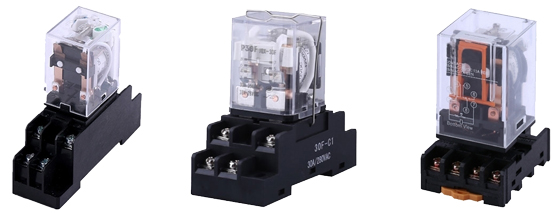Relay Troubleshooting
A relay is a controllable mechanical switch, mainly composed of coils and contacts. The coil is the input part. According to the electromagnetic effect, after passing an appropriate current through the coil, magnetism is generated to move the contacts. The contact is the output part. After the coil has a current through it, it will act, so as to realize the switching function, and then the weak current can control the strong current.
Due to various reasons, various faults often occur in relays during use. Such as low product quality, improper use, poor maintenance, etc. For electronic relays, because there are few types of electronic relays currently used on locomotives, their faults and handling, inspection and testing have their own characteristics. ATO relay manufacturer will introduce the faults and handling of relays. The following 6 points are the most common failures.

Contact Failure
The loose and cracked contact is the electrical contact part of the relay that completes the load switching. Some products have contacts that are riveted and press-fit. Their main disadvantage is loose contacts, cracked contacts or excessive dimensional deviation. This affects the contact reliability of the relay. The loosening of the disassembly point is caused by the unreasonable matching size of the reed and the contact or the improper adjustment of the riveting pressure by the operator. Contact cracking is caused by the hardness of the material being too high or the pressure being too high. For contacts made of different materials, different materials should be used. Some harder contact materials are annealed before contact fabrication, riveting or spot welding. Be careful when touching, because the material has tolerances, so the length of each piece is decided after touching. There should be no flash, pad damage or fullness in contact manufacturing. The contact riveting deviation is caused by the inaccuracy of the operator's contact tool and the dislocation of the upper and lower contact tools. Contact damage and contamination are caused by oil and iron filings on uncleaned touch tools. Whatever the disadvantage is, it affects the reliability of the relay. Therefore, in the process of contact manufacturing, riveting or electric welding, it is necessary to comply with the requirements of manufacturing standards to improve the quality of assembly.
Deformation of Riveted Parts
The deformation of the riveted parts of the electromagnetic system. The bending, skewing and thick black piers of the parts after riveting will cause difficulties in the assembly or adjustment of the next process, or even scrap. The main reasons for this problem are that the riveted parts are too long or too short, or the force during riveting is uneven, the contact assembly deviation or design size is wrong, and the parts are not placed properly. When riveting, the operator should first check whether the size, appearance and contact tool of the part are correct. If the contactor is not installed in place, it will affect the assembly quality of the electromagnetic system or the deformation of the iron core and the thickness of the pier.
Unstable Parameter
The relay parameters are not random. The components of the electromagnetic relay are riveted and matched, and the main problem is that the riveting is loose or the bonding strength is not good. This problem will make the parameters of the relay not stable, the parameters change greatly under high and low temperature, and the resistance to mechanical vibration and impact is poor. The main reasons for such failures are out of tolerance riveted parts, improper placement of parts, quality deviation of tools or incorrect installation. Therefore, before riveting, it is necessary to carefully check whether the tools and riveting parts meet the requirements.

Damaged Glass Insulator
The glass insulator is damaged. Glass insulators are sintered from metal pins and glass. In the process of inspection, assembly, adjustment, transportation and cleaning, the pins are easy to bend, and the glass insulators fall off and crack, resulting in a drop in insulation and withstand voltage during air leakage. The needle roller will also cause the displacement of the contact reed, which will affect the reliable on-off of the product. This requires the assembly operator to handle the relay with care throughout the production process, and the parts should be neatly arranged in the transfer case. Do not pull or twist the lead pins during assembly or adjustment.
Magnetic Circuit Failure
- Corners and wear on the shaft can cause the armature to fail to turn or become stuck.
- In some DC relays, due to mechanical wear or damage to non-magnetic gaskets, the minimum air gap after the armature is closed becomes smaller, and the residual magnetism is too large, resulting in the failure that the armature cannot be released.
- When the magnetic ring on the core of the AC relay is broken, or the pole faces of the armature and the core are rusted or intruded with impurities, the armature will vibrate and generate noise.
- In the E-type iron core of the AC relay, when the air gap of the center column disappears due to the wear of the iron cores on both sides, the failure of the armature sticking will occur.
Coil Failure
The coil is faulty. There are many kinds of coils used in relays, whether they are purchased or not. All coils should be placed separately in dedicated appliances. If they collide and cross, they will break when separated. When riveting the electromagnetic system, the pressure adjustment of the hand press and the press should be moderate. Excessive pressure can cause coil breakage or spool breakage, deformation, and winding damage. If the pressure is too low, the windings will loosen and magnetic losses will increase. Multi-winding coils are usually led out by leads of different colors. Pay attention to the distinction when welding, otherwise it will cause the wrong welding of the coil. Coils with start and end requirements are generally marked with markers.
